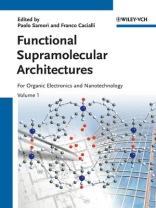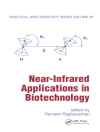A comprehensive overview of functional nanosystems based on organic and polymeric materials and their impact on current and future research and technology in the highly interdisciplinary field of materials science. As such, this handbook covers synthesis and fabrication methods, as well as properties and characterization of supramolecular architectures. Much of the contents are devoted to existing and emerging applications, such as organic solar cells, transistors, diodes, nanowires and molecular switches.
The result is an indispensable resource for materials scientists, organic chemists, molecular physicists and electrochemists looking for a reliable reference on this hot topic.
Tabla de materias
VOLUME 1
PART I: Modeling and Theory
CHARGE TRANSPORT IN ORGANIC SEMICONDUCTORS: A MULTISCALE MODELING
Introduction
Organic Single Crystals
Tetrathiafulvalene Derivatives
Polythiophene Derivatives
Polymer Dielectrics
Outlook
MONTE CARLO STUDIES OF PHASE TRANSITIONS AND COOPERATIVE MOTION IN LANGMUIR MONOLAYERS WITH INTERNAL DIPOLES
Introduction
Computational Details
Results and Discussion
Summary
MOLECULES ON GOLD SURFACES: WHAT THEY DO AND HOW THEY GO AROUND TO DO IT
Introduction
A Simple Description of the Geometrical Structure of Metals
A Simple Description of the Geometrical Structure of Molecules
Electronegativity Governs Chemical Interactions: Charge Equilibration, Qeq, Models
A Simple Description of the Interaction between Metal Surfaces and Molecules
Presence of an External Electric Potential or Field
Generality of the Model and Its Transferability
Thiolates on Gold
Adsorption of a Large Molecule: C60
Simple Packing Problems
The Presence of an Electrostatic Potential
Challenges and Conclusion
PART II: Supramolecular Synthetic Chemistry
CONJUGATED POLYMER SENSORS: DESIGN, PRINCIPLES, AND BIOLOGICAL APPLICATIONS
Introduction
Water Solubility
Protein Detection
DNA Detection
Bacteria Detection
Electron-Deficient Polymers
Aggregation-Based Detection
Temperature-Responsive Fluorescent Polymers
Nonhomogeneous Detection Schemes
Mechanism of Energy Transfer
Conclusions and Future Directions
CHROMOPHORIC POLYISOCYANIDE MATERIALS
Introduction
Polyisocyanide Materials
Perylene Polyisocyanides in Devices
TFT Devices
Morphology Control in Perylene/Crystal Systems
Postmodification of Polyisocyanopeptides
Toward Larger Length Scales: Polyisocyanopeptide Brushes
Summary and Outlook
FUNCTIONAL POLYPHENYLENES FOR SUPRAMOLECULAR ORDERING AND APPLICATION IN ORGANIC ELECTRONICS
Introduction
Conjugated Polymers
Graphene Molecules and Their Alignment
Rylenes Dyes
Dendritic Polyphenylenes: The Three-Dimensional Case
Conclusion and Outlook
MOLECULAR TECTONICS: DESIGN OF HYBRID NETWORKS AND CRYSTALS BASED ON CHARGE-ASSISTED HYDROGEN BONDS
Introduction
Examples of Rubust Charge-Assisted H-Bonded (CAHB) Networks
Charge-Assisted H-Bonded Networks Based on Amidinium Tectons
Charge-Assisted H-Bonded Networks Based on Amidinium and Polycyanometallate Tectons
Properties of Charge-Assisted H-Bonded Networks Based on Amidinium Tectons
Design of Crystals Based on CAHB Networks
Conclusion
SYNTHESIS AND DESIGN OF PI-CONJUGATED ORGANIC ARCHITECTURES DOPED WITH HETEROATOMS
Introduction
Boron
Sulfur, Selenium, and Tellurium
Miscellaneous
Conclusions
PART III: Nanopatterning and Processing
FUNCTIONALIZATION AND ASSEMBLING OF INORGANIC NANOCONTAINERS FOR OPTICAL AND BIOMEDICAL APPLICATIONS
Introduction
Zeolite L as Inorganic Nanocontainers
Functionalization of Zeolites: Host-Guest Chemistry and Surface and Channel Functionalizations
Photoinduced Processes in Zeolites
Self-Assembly in Solution and on Surfaces
Possible Optical and Biomedical Applications of Nanocontainers
SOFT LITHOGRAPHY FOR PATTERNING SELF-ASSEMBLING SYSTEMS
Introduction
Self-Assembling Systems
Soft Lithography
Contact Printing of SAMs with High Resolution
Soft Lithography to Pattern Assemblies of Nanoparticles
Soft Lithography Pattern Supramolecular Assembly
Concluding Remarks
COLLOIDAL SELF-ASSEMBLY OF SEMICONDUCTING POLYMER NANOSPHERES: A NOVEL ROUTE TO FUNCTIONAL ARCHITECTURES FOR ORGANIC ELECTRONIC DEVICES
Introduction
Formation of Semiconducting Polymer Nanospheres
Driving Forces behind Nanoparticle Self-Assembly Processes
Deposition Methods for Aqueous Dispersions of Semiconducting Polymer Nanospheres
Conclusions
PHOTOLITHOGRAPHIC PATTERNING OF ORGANIC ELECTRONIC MATERIALS
Introduction
Photolithographic Methods for Patterning Organic Materials
Conclusions and General Considerations
PART IV: Scanning Probe Microscopies
TOWARD SUPRAMOLECULAR ENGINEERING OF FUNCTIONAL NANOMATERIALS: PREPROGRAMMING MULTICOMPONENT 2D SELF-ASSEMBLY AT SOLID-LIQUID INTERFACES
Introduction
Van de
Sobre el autor
Paolo Samorì is full professor of Physical Chemistry and senior member as well as deputy director of the Institut de Science et d’Ingénierie Supramoléculaires (ISIS) of the Université de Strasbourg (Ud S) & CNRS where he is also Director of the Nanochemistry Laboratory. He is also a junior member of the Institut Universitaire de France (IUF). After his Ph D in Chemistry from the Humboldt University Berlin, Germany, he was permanent research scientist at the National Research Council in Bologna, Italy. His research interests span applications of scanning probe microscopies, supramolecular electronics and the fabrication of molecular-scale nanodevices. Paolo Samorì has received numerous awards, including the IUPAC Prize for Young Chemists 2001, the Vincenzo Caglioti award 2006 granted by the Accademia Nazionale dei Lincei , the ‘Nicolò Copernico’ award 2009 (Italy), the prix ‘Guy Ourisson’ 2010 du Cercle Gutenberg, and the ERC starting grant 2010.
Franco Cacialli is Professor of Physics at the Department of Physics and Astronomy, and the London Centre for Nanotechnology, University College London, UK. After his Ph D in Electronics at the University of Pisa, Italy, he moved to Cambridge, UK, where he held a Royal Society University Research Fellowship to work on the electrical and optical properties of organic semiconductors (1996-2000). In 2001 he joined UCL, and set up a research group focusing on the exploitation of supramolecular architectures for plastic electronics, as well as fabrication and characterization of organic semiconductor nanostructures. Franco Cacialli was elected a Fellow of the American Physical Society in 2009.












